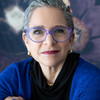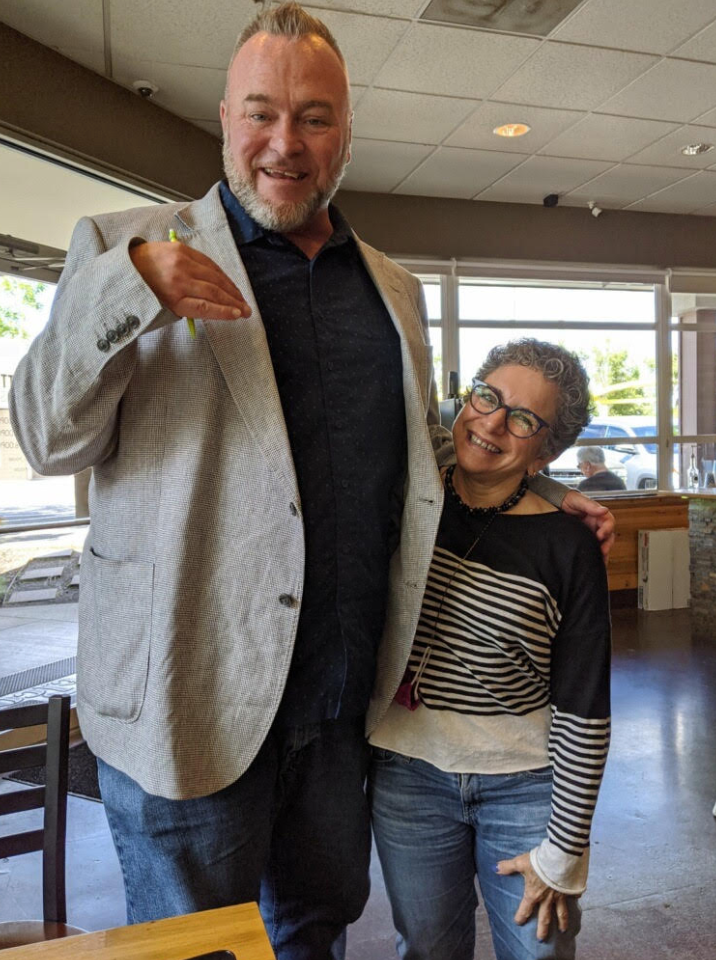
As a patient and then a provider, I’ve lived my life in health care.
Before my first birthday, I started wheezing. Severely. My parents were veterans: Steve, one of three older brothers, spent a week in an oxygen tent as an infant. I didn’t comprehend “oxygen tent,” but knew it was scary — Mom’s eyes flared whenever she mentioned it.
Asthma eventually proved more serious for me. As early as 3 or 4, Mom often looked at me, fear distorting her face. “Are you wheezing? You’re wheezing!” she exclaimed, as if I’d besmirched her fine china with grubby preschool fingers. “Let me give you medicine!” she’d say and then force-feed me some ghastly liquid to help me breathe.
Still, the asthma ruthlessly advanced. Muscles in my neck and shoulders worked overtime as I tried to breathe, giving me unusually broad shoulders and flared ribs. In the mid- to late-1960s, modern medicine poured its glaring fluorescent lights as though it could cure all. The physician was king and Father Knew Best. Dr. Randon, the allergist, tried steroids — the new “miracle” treatment — on Steve and me to see if he could wrest our asthma under control.
Randon’s steroids, though, were not the relatively safe, we-all-know-the-side-effects-of-prednisone steroids. At least not for me. Steve avoided what I was prescribed. But Randon injected me with near-weekly ACTH shots (a stress hormone not designed for asthma treatment) and prescribed daily anabolic steroids orally. For years, four times a day, I swallowed a handful of pills Mom left on the kitchen counter. In one of those neat piles, I scooped up a Dianabol tab. My brothers tease me to this day, as older brothers are wont to do, chidingly calling me “Dianabol.”
Dianabol, an anabolic steroid marketed to build muscle, increase testosterone and burn fat in athletes, is still widely available ― just a click away on the internet.
But I was not an athlete. I was a kid ― and a girl ― and in no need of supplemental testosterone.
One day, Steve, Mom and I sat in Randon’s office after he had seen us in the exam rooms. “Look, Mom,” Steve said as we waited for Randon. Steve opened a pamphlet to a black-and-white photo of two teen boys standing back-to-back against a visible measuring stick. The boys stood at least a head’s difference in height. The caption said they were the same age, but one had been given anabolic steroids, stunting his growth.
Mom clutched the pamphlet until Randon strode in. Before he had a chance to sit behind his desk, Mom spoke up.

“Look! Steve found this pamphlet. These are the pills Diane is taking, right?” she demanded. “It says they stunt... ”
“Oh, don’t worry about that,” Randon said gazing at charts littering his desk and waving dismissively. “That doesn’t mean anything.”
Mom was bright but not well-educated. She trusted Randon. She was relieved. She let it go.
When I was 8, we visited Dr. Echt, a pediatrician, who displayed my growth chart. My “growth” had flatlined for about two years, like a dead EKG tracing. I still wore clothes in size 6x, a “little girl’s” size, but was in second or third grade. “I thought you were going to be petite!” Mom later said, shaking her head. “You were so cute!”
Echt showed the growth chart to me as well. From as early as I can remember, Mom welcomed me into these discussions, a lifelong lesson in transparency, agency and mindful parenting.
I did not like Randon, but I liked Echt. I felt safe ― cared for. Today I recognize Echt’s tone, chagrin and meticulously chosen words as awareness that Randon had gravely erred, but with reluctance to indict a fellow physician. Echt simply made it clear that I had stopped growing, this was definitely not OK and I needed to be referred to the local, nationally renowned Scripps Clinic.
And there began another odyssey.
By this time, I was waking near nightly. I’d wake and bolt upright in the midst of an asthma attack, shoulders high, ribs flaring and retracting, wheezing my way to the kitchen. I set up the nebulizer and measured out saline and medication. (These medications, along with handheld “Medihalers” that I used, were subsequently discontinued due to asthma fatalities.) I sat alone in the quiet dark, sucking in steamy, saline-infused medicine. Afterward, I’d pad back to bed, sitting up reading until I could breathe enough to fall asleep. Today, nocturnal asthma is a hallmark of severe disease. Then, it was my normal ― an 8-year-old, alone in the night, managing life-threatening asthma.
At Scripps, I underwent every test and procedure possible ― urine, blood, stool, EKG, lung function, pokes and prods. I’m sure the physicians wanted to rule out metabolic or other causes of severe pediatric growth retardation. I missed so much school. If I was lucky, Mom took me to lunch after appointments. Long gone were earlier trips to the toy store for presents following good behavior at a medical visit. She couldn’t have kept up.
And still, the asthma advanced.
Physicians at Scripps ultimately admitted me “for observation,” something that would never fly with insurance companies today. I loved this interlude. I read constantly or watched TV, which was wisely restricted at home. The nurses, too, evidently found me petite and cute. They attended to my needs, offering me as many choices as possible. They let me stay up long past bedtime to watch “The Smothers Brothers,” in flagrant opposition to Mom’s orders. In essence, I found my first collaborative health care team.
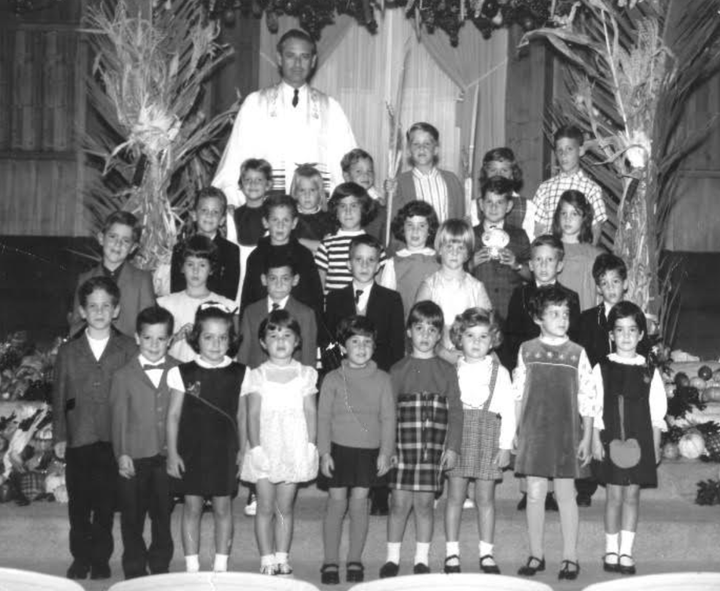
The tests ruled out cancer or gastrointestinal disorders, hidden infections or hormonal issues, kidney or liver disease. My growth had been stunted purely due to anabolic steroids. Randon used these drugs to treat patients with milder issues as well ― Mom referred friends to him, and their children’s growth was stunted also. No one stopped Randon. My parents considered suing — my father was an attorney — but ultimately discarded the idea. They didn’t “want the publicity.”
The Scripps team prescribed carefully monitored prednisone for a few years, and I began to grow. In a family with parents who were 5 feet, 4 inches and 5 feet 10, and brothers who were 5 feet 9, 5 feet 10 and 5 feet 11, I would grow to be 4 feet, 9 inches. I might have been shorter than anyone else in my family simply due to being so ill, but definitely not that short. Standing under 4 feet 10 is, by definition, dwarfism.
Prednisone improved the asthma a bit but eventuated later in osteopenia (the precursor to osteoporosis). At least I was finally receiving the standard of care. I still wheezed ― middle school was shot through with attacks like Jarlsberg cheese ― and my schooling was full of class absences to use the nebulizer or visit the emergency room. If I had friends over and Mom heard us laughing, she burst into my room, anxiously yelling, “No laughing!”
Laughter, pungent perfumes, bursts of cold air, exertion, pets, plants (mold) ― all could trigger severe, immediate asthma.
Early in high school, I caught a cold that swiftly migrated south into bronchitis and unremitting wheezing. I overused my inhaler and became “adrenal fast” ― tolerant to the medication so it was now ineffective — and ended up in the ER. My lung function was abysmal. People started darting around and shouting. I was transferred to an operating room and prepared for a tracheotomy.
I was 14, gripping the thin black gurney in the OR, hyper-still, bolt-upright, wide-eyed, watching. Shoulders to my ears, bluish skin, straining fiercely to simply breathe. Two physicians flew around the room, barking orders. They gave me every medication in their armamentarium, but still I could not breathe.
Suddenly I felt the slightest shift. An opening, a tiny ease in breath. I let go, exhausted, somehow knowing I was safe. I woke in a hospital bed alongside another teen, the victim of a car accident, watching ”Hawaii Five-0.”
Shortly after, one of those ER physicians admitted how terrified they had been, sure I was going to die on their watch.
Inhaled steroids soon hit the market, and, gratefully, my life and asthma improved dramatically.
My growth, though, was still stunted. Until Mom felt there were no stones to upturn, she insisted on seeing every specialist to counter inadvertently colluding with Randon in my short stature. She sped over Southern California freeways, dragging me from expert to expert, one of whom made an offer to try growth hormone therapy.
At this point, I refused. I was the same height as my maternal great-grandmother Fanny, who had successfully birthed nine children (including a set of twins) and lived into her 90s. That was good enough for me. Enough with medical miracles.
I had follow-up appointments, though, and at 16 or 17, I drove myself. One endocrinologist entered my exam room with a gaggle of all male medical students and residents trailing behind.
“Stand up on the table, please,” he ordered, no introduction.
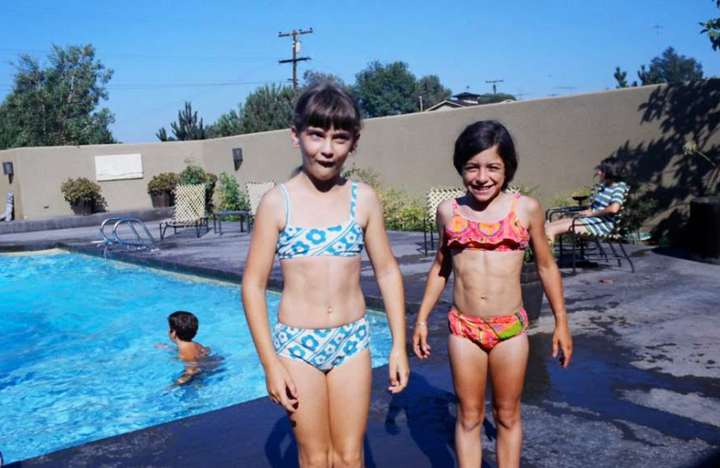
I had learned to listen. I clutched my flimsy gown and stood, standing above the group as though on some strange runway. The air grew stuffy and silent but for the shiny white paper crinkling beneath my feet.
“Take your gown off, please,” the doctor said, matter of fact. I was confused but obeyed.
“You don’t mind, right?”
He pointed at me, talking about my “normal” breasts and pubic hair as if I was not there. He regaled his audience of young men with an explanation of my stunted growth and its iatrogenesis (caused by medical treatment).
None of the students or residents piped up. Soon they filed out, leaving me standing on the table, stunned, hot with shame, alone.
I attended college and acquired a degree in psychology, then became a certified nurse-midwife to help empower women. From there I became a psychiatric mental health nurse practitioner and acquired a Ph.D. in nursing. Between degrees, I had four children, ever grateful my medical history had not permanently impaired my fertility.
Several years ago, my primary care provider suggested a blood allergy test. Her MyChart message strangely validated my medical history: “I’ve never seen such high values. Please see an allergist.”
The allergist assured me a lifetime of allergy shots had been successful, and food allergies were so rare we didn’t need to worry about them.
“We might as well test for them, though, right?” I asked.
Sure, came the reply, no problem, we could “check that box.” (As a child, my mother had been repeatedly assured food allergies did not exist ― foods could not possibly be implicated in asthma.)
The allergist left, and the medical assistant placed roughly 40 skin pricks up and down my arms. By the time the allergist returned, my arms blazed red and fiery, punctuated with welts, burning hot and itchy. I was allergic to tree nuts, beans, legumes, carrots, beets, eggplant, mushrooms, peaches, yeast (bread), soy, squash and so on — foods I’d eaten my whole life. I eliminated the offenders and, for the first time ever, stopped wheezing. I have taken no asthma medication for nearly two years.
A medical miracle?
Early on, I became determined to help others avoid experiences that framed my childhood and adolescence with less-than-adequate (at best) or permanently disabling (at worst) medical care. To help others heal after similar or diverse traumas. I have little animus toward the particular players — Randon and the other doctors. They were products of their own lives and time periods and medical educations.
I hear calls, over and over, that medical education must reform itself ― that we must teach compassion, communication, rehumanize physicians and medicine. Or else, doomsayers proclaim, health care is lost. The stark, mass exodus of health care personnel from the field — a nascent epidemic long before COVID — serves as an illustration of how medicine strips its own of respect and dignity, inevitably dominoing down to substandard patient care.
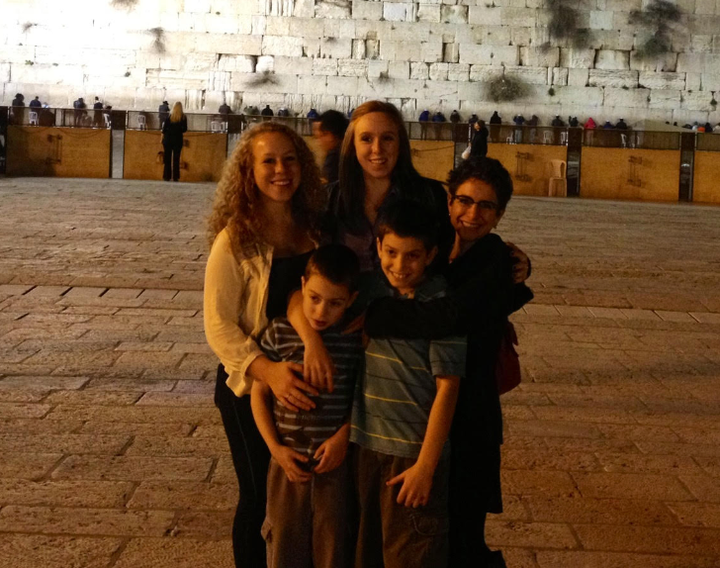
A few years ago, I was recruited after a yoga class to teach professional skills to first-year medical students. My fellow yoga student served as professor of psychiatry, family medicine, and public health and preventive medicine at our joint academic institution. I had never taught in a classroom but wanted to try. After two years, I resigned, as the job was considered “volunteer” and I could not afford to continue. Evidently, this service was not deemed worthy of payment.
While I taught, though, I loved my students — fresh-faced, eager medical students, divided by gender. I was instructed to teach a curriculum considered revolutionary, intended to improve the culture of medicine. We role-played so students could practice introducing themselves to each other as mock patients and providers ― asking what name the “patient” preferred, sitting at “patient” level. I had to screen a video explaining why it helped to sit at patient level. Not because it was the right thing to do ― to create a healing relationship with another human ― but because research showed if you sit with the patient, the patient estimates you spent more minutes with them than you actually did, thus increasing your patient satisfaction scores.
As the term went on, I dispensed with the prescribed curriculum as quickly as possible and diverted into what students seemed to need. I asked about their lives. They talked about frustrations with preceptors, feeling misunderstood, and the intense, unrelenting pressures of medical school. I taught them to establish rapport with patients ― not because it would increase patient satisfaction scores, but because it would make their jobs gratifying and give them the meaning and purpose that drew them to medicine in the first place. I taught how to think about what happened to a recalcitrant or treatment-averse patient, not what was wrong with them. How to meet, say, a heroin-using pregnant person and generate compassion; to wonder what motivated continued drug use when they said they wanted to stop; or how to understand a patient near-death with diabetes who didn’t follow simple, lifesaving medical advice. I did my best to offer an inclusive, holistic, health-promotion and treatment model of health care, not a disease-treatment, acute care model of medicine, per se. To model the human vulnerability but also real power and strength of collaborating with patients, showing humanity, taking responsibility — even apologizing when warranted. We are human. We make mistakes.
At the end of term, the students handed me a slim envelope with a card nestled inside. I thanked them, placing it in my bag for later. It fell out when I got to my car, so I read it before driving home in the Portland dusk. I was stunned.
“These two hours each week have been a calm and relaxing saving grace amidst all the changes of starting medical school. Thank you, truly, for the sanctuary,” one message read. “I always looked forward to our 2 hours together each week. You have helped me become a more mindful medical student,” read another. “Thank you so much for your time, kind words, and genuine interest in us.” “Each week you have provided us with a safe refuge of learning and friendship. In the storm of medical school, this is my weekly consistency.”
I did nothing magical or extraordinary with these students. I treated them respectfully, as those long-ago nurses in that pediatric ward treated me. I listened. I knew they had much to teach. I viewed them as whole people, struggling and strong, overwhelmed and determined, irritable but earnest.
I simply shared the wisdom and compassion, the critical interpersonal skills, the equity-focused, relationship-building skills of nurse practitioners. And I hoped they would take this with them so, unlike what I experienced as a child (and what too many still experience when they see a physician), their patients receive the best care possible — and feel cared for.
Note: Some names and identifying details have been changed to protect the privacy of individuals mentioned in this essay.
Do you have a compelling personal story you’d like to see published on HuffPost? Find out what we’re looking for here and send us a pitch.
